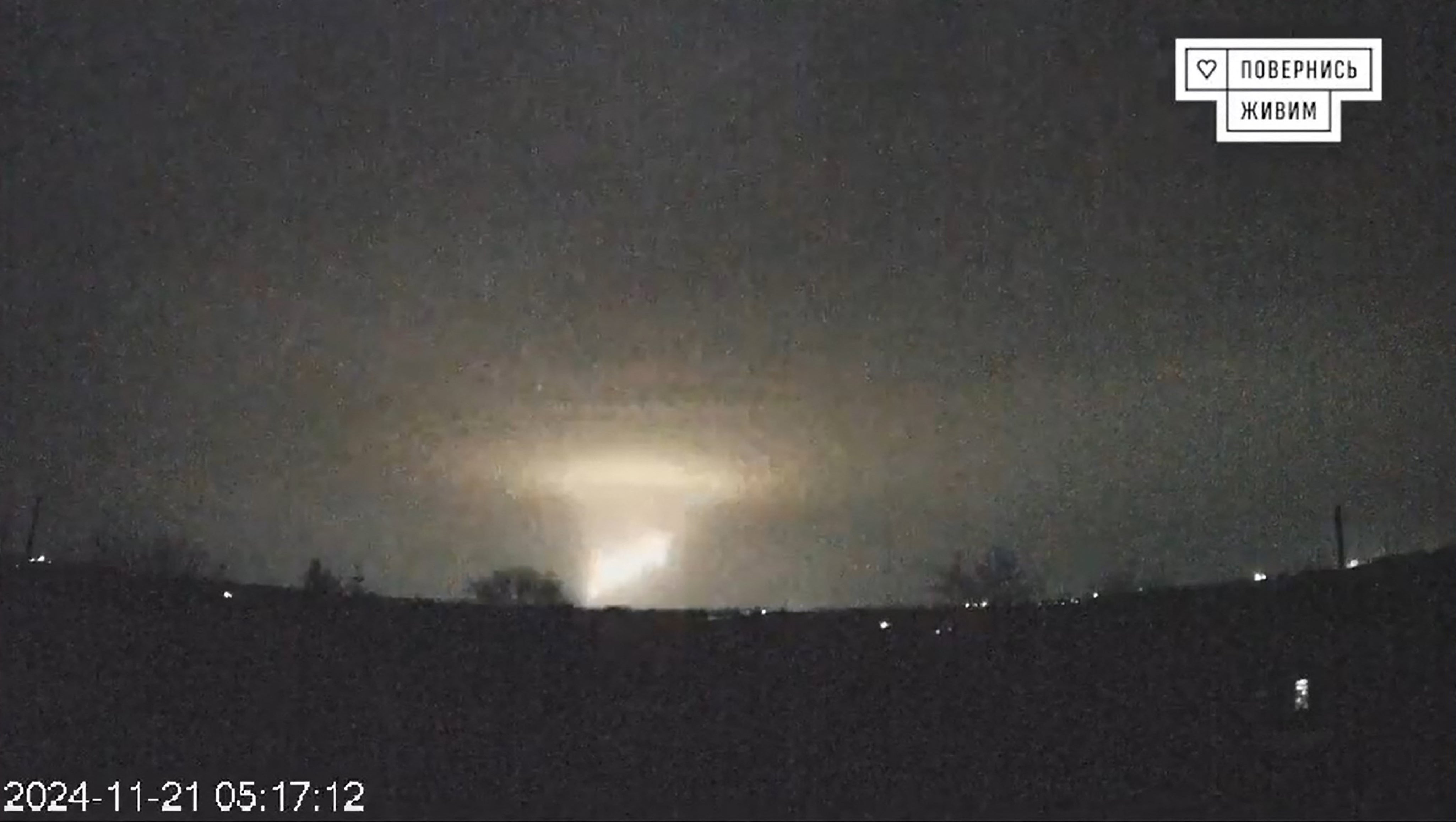What do we know about Putin’s ‘experimental’ ballistic missile?
The Russian experimental missile could be fitted to carry nuclear warheads, the US Pentagon has warned

Your support helps us to tell the story
From reproductive rights to climate change to Big Tech, The Independent is on the ground when the story is developing. Whether it's investigating the financials of Elon Musk's pro-Trump PAC or producing our latest documentary, 'The A Word', which shines a light on the American women fighting for reproductive rights, we know how important it is to parse out the facts from the messaging.
At such a critical moment in US history, we need reporters on the ground. Your donation allows us to keep sending journalists to speak to both sides of the story.
The Independent is trusted by Americans across the entire political spectrum. And unlike many other quality news outlets, we choose not to lock Americans out of our reporting and analysis with paywalls. We believe quality journalism should be available to everyone, paid for by those who can afford it.
Your support makes all the difference.Vladimir Putin has claimed Moscow launched a new hypersonic ballistic missile against Ukraine in response to strikes by Kyiv inside Russia using UK and US long-range missiles.
The Russian leader said the Oreshnik, or Hazel, medium-range missile had been used in the strike on Dnipro, central Ukraine, after Ukraine said a longer-range intercontinental warhead was launched.
He also said Russia could attack military facilities in countries that have allowed Kyiv to use their missiles to strike Russia, in an apparent threat to the US and UK.
he Kremlin added on Friday that the missile launch was a message to the West that Moscow will respond harshly to any "reckless" Western actions in support of Ukraine.
“We believe that we have the right to use our weapons against military facilities of the countries that allow to use their weapons against our facilities,” he said.
So what is the experimental Oreshnik missile, and could it be used to hit European countries? The Independent takes a look below.
What is the missile?
Ukraine’s air force initially said the missile was an intercontinental ballistic missile (ICBM) - the kind that Russia could hit the United States with.

But the US military later said the weapon was an intermediate-range missile based on the design of Russia’s longer-range RS-26 ICBM missile.
The Pentagon said it was fired with a conventional warhead but Moscow could modify it if it wanted, with Russia only possessing a handful of them.
“It could be refitted to certainly carry different types of conventional or nuclear warheads,” Pentagon spokesperson Sabrina Singh said.

Russia's Defence Ministry claimed on Friday that all of the missile's warheads had hit their targets and hailed what it said was its first successful use of an intermediate-range hypersonic ballistic missile with conventional warheads in combat.
How damaging could it be?
While launching an intermediate-range missile is a less threatening signal, the incident could still set off alarms and Moscow notified Washington briefly ahead of the launch, according to US officials.
The Kremlin said Russia had not been technically obliged to warn the United States about the strike because the missile used had been intermediate-range rather than intercontinental, but added that Moscow had informed the U.S. 30 minutes before the launch anyway.
Russian military expert Anatoly Matviychuk said it could carry six to eight conventional or nuclear warheads, and was probably already in service.
Putin said the missile travelled at 10 times the speed of sound [Mach 10] and so could not be intercepted, with Russian sources saying the range was 3,1000 miles.
It also appeared to have multiple independently targetable re-entry vehicles: separate warheads able to hit different targets.
"The flight time of this Russian missile from the moment of its launch in the Astrakhan region to its impact in the city of Dnipro was 15 minutes," Ukraine’s Main Directorate of Intelligence (HUR) said in a statement on Friday.
"The missile was equipped with six warheads: each equipped with six submunitions. The speed at the final part of the trajectory was over Mach 11."
HUR added that the weapon was "likely from the 'Kedr' missile complex." Kedr is a Russian ICBM missile programme, which also contains a number of other ballistic missile projects.



Join our commenting forum
Join thought-provoking conversations, follow other Independent readers and see their replies
Comments